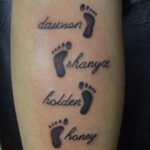Imagine a Hawaiian island untouched by time, a sanctuary preserving the essence of old Hawaii, resisting the modern world’s encroachment. Welcome to Niihau, often called “The Forbidden Isle,” a place shrouded in mystique and accessible only by invitation from the Robinson family or with government authorization.
Over a century and a half ago, Elizabeth McHutcheson Sinclair, a Scottish widow, acquired Niihau from the Kingdom of Hawaii for $10,000 in gold and, legend says, a grand piano. In 1864, this determined 63-year-old matriarch, along with thirteen family members, embarked on an extraordinary journey from Scotland to New Zealand and then to the shores of this remote Hawaiian island. Their vessel, The Bessie, was a modern-day Noah’s Ark, carrying sheep, cows, hay, grain, chickens, books, clothing, and the aforementioned grand piano. Stepping onto Niihau, Elizabeth Sinclair declared her ownership and pledged to protect native Hawaiian culture and traditions.
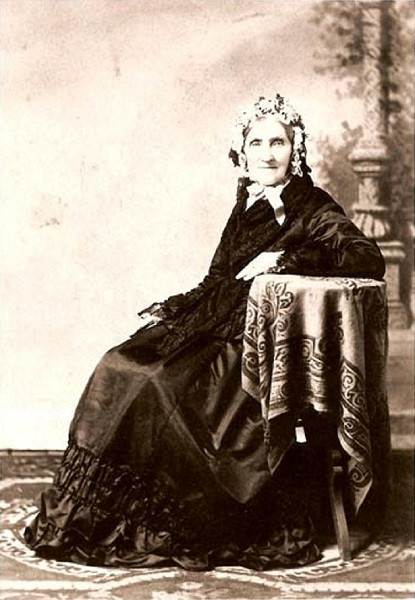 Elizabeth Sinclair, the matriarch who purchased Niihau in 1864, committed to preserving Hawaiian culture.
Elizabeth Sinclair, the matriarch who purchased Niihau in 1864, committed to preserving Hawaiian culture.
Today, access to Niihau remains strictly controlled by the descendants of Elizabeth Sinclair, her great-great-grandsons, Keith and Bruce Robinson. Their family lineage continued through Elizabeth’s daughter who married a Charles Robinson, establishing the Robinson family’s long-term stewardship of the island, reminiscent of literary families like the Swiss Family Robinson.
Just a short distance from the bustling island of Kauai, Niihau stands as a remarkable anomaly. It has defied modernization, retaining the authentic charm of 19th-century Hawaii. Niihau lacks paved roads, running water, indoor plumbing, shops, formal medical facilities, and law enforcement. Electricity via solar power is a recent and limited introduction. The island’s inhabitants reside in Pu‘uwai, a single small village on the western coast, living rent-free and communally.
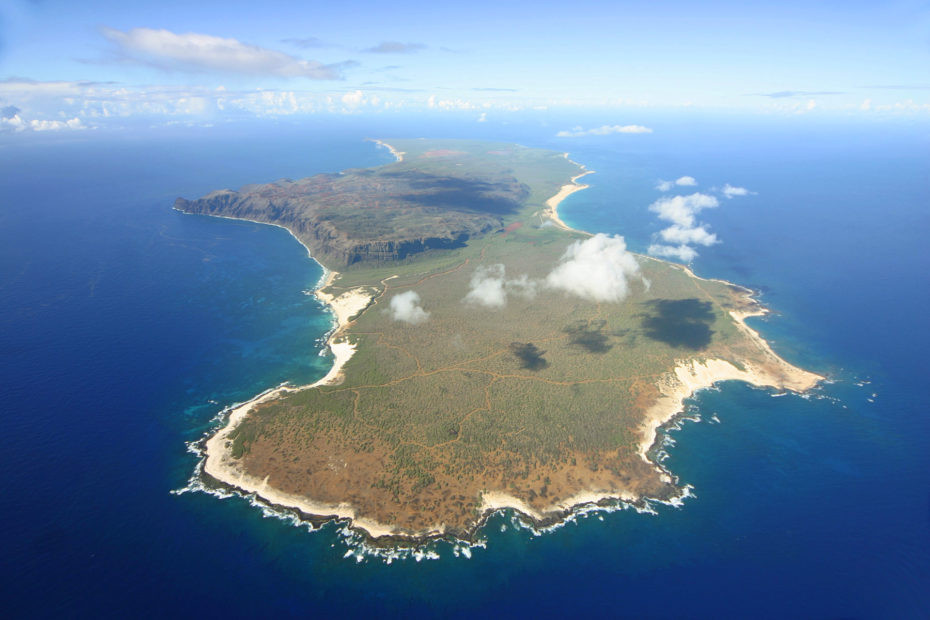 Aerial view of Niihau island, showcasing its remote location and pristine natural landscape.
Aerial view of Niihau island, showcasing its remote location and pristine natural landscape.
In 1987, the Robinson family reluctantly began offering helicopter tours, a venture initiated to offset the costs of the helicopter, originally acquired for medical emergencies. These half-day tours, priced at $440, use the same helicopter featured in the original Jurassic Park. Visitors are briefly landed on a secluded northern beach, but interaction with the village or its residents is strictly prohibited. Communication with the islanders remains off-limits for tourists.
Niihau’s surrounding waters are renowned for exceptional diving, teeming with sharks, monk seals, and sea turtles. While some boating and snorkeling tours venture close to the coast, allowing glimpses of Polynesian boar and feral sheep, landing on Niihau without permission carries significant legal repercussions. Since the early 1990s, one-day safari hunts have provided another revenue stream, attracting tourists willing to pay $3000 to hunt eland, aoudad, oryx, wild sheep, and boars. Accommodation is not offered; safari guests depart the same day, and contact with residents remains strictly controlled.
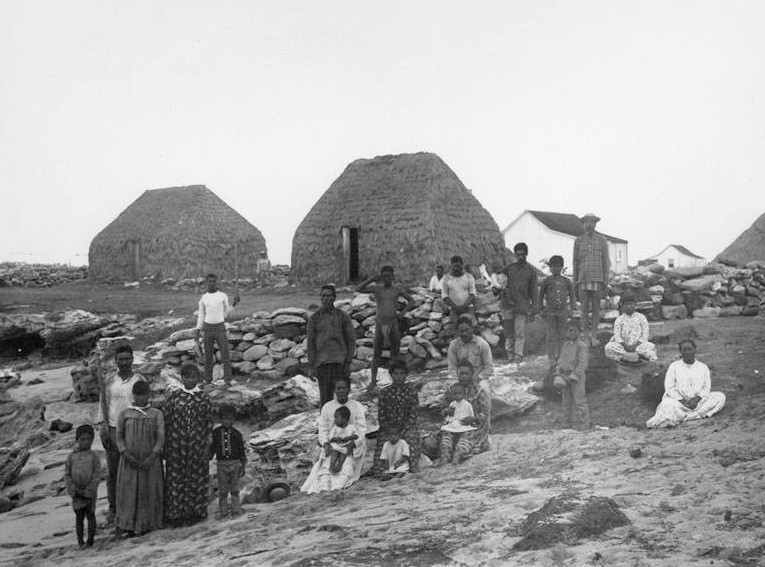 Historic photograph of Pu'uwai Beach settlement in Niihau, capturing a group of villagers in 1885.
Historic photograph of Pu'uwai Beach settlement in Niihau, capturing a group of villagers in 1885.
When the Sinclair family arrived, approximately 1000 native Hawaiians lived on Niihau. Over time, the population dwindled as many moved away. Current estimates of indigenous inhabitants vary; while a 2010 census recorded 170 residents, some accounts suggest as few as 25 to 50 people, comprising only five families. Despite being U.S. citizens, their lives are governed by the rules set by the Robinson family, which include bans on alcohol and cigarettes and restrictions on personal appearance like beards and long hair for men. Residents are discouraged from speaking to the media about Niihau, and leaving the island for extended periods can mean forfeiting their right to return. Leiana Robinson, Bruce Robinson’s wife, although a native Niihauan herself, plays a crucial role in enforcing these regulations, which are intended to protect the community, their traditions, and the island’s unique environment. Niihauan residents, including the Robinsons, speak a distinct Hawaiian dialect, a relic of Kauai’s linguistic past. Most Niihauans have never encountered foreign tourists. Supplies are delivered by a WWII-era barge, but islanders primarily sustain themselves through foraging and farming, with meat from island livestock freely available, supplemented by game hunted by safari visitors.
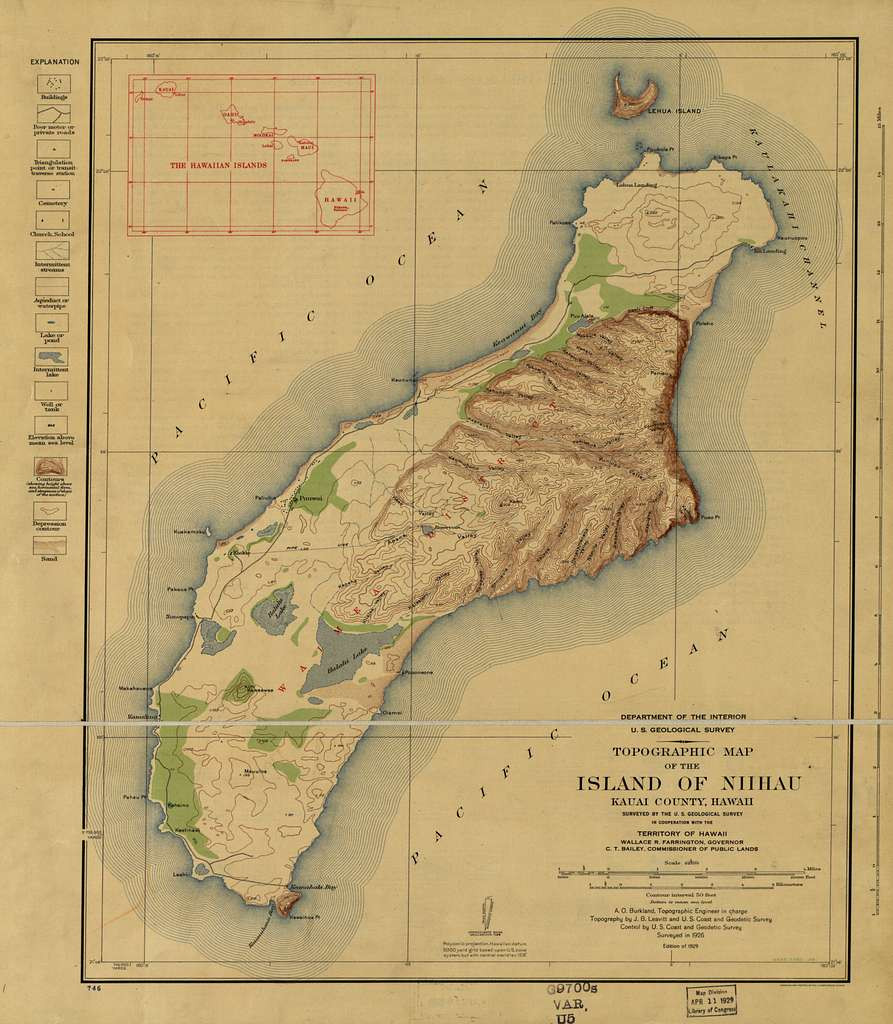 Topographic map of Niihau island, illustrating its geographical features and remote location within the Hawaiian archipelago.
Topographic map of Niihau island, illustrating its geographical features and remote location within the Hawaiian archipelago.
Instead of embracing tourism and commercial development, the people of Niihau have accepted a significant U.S. military presence, viewed by the Robinsons as the lesser of two evils. Since 1924, Niihau has been used by the U.S. Navy for special operations training, missile defense tests, and tracking foreign missiles. Villagers are employed to maintain radar installations in the hills, contributing roughly 80% of the island’s income. This connection to the military has even brought Niihau into unexpected historical events.
One such event involved a Japanese pilot who crash-landed on Niihau after the Pearl Harbor attack. Unaware of the unfolding global conflict, islanders initially offered him hospitality. Upon learning of Pearl Harbor, they detained him, but he escaped, leading to a violent confrontation in which he shot a Niihauan inhabitant before being killed. This inhabitant was posthumously awarded a Congressional Medal and Purple Heart, and the incident inspired the 2019 film Enemy Within.
The Robinson family’s commitment to preserving Niihau suggests they will never sell the island. Rumors persist that Niihau was once considered as a potential site for the United Nations headquarters by President Roosevelt, and the family has reportedly declined offers of up to $1 billion for the island from the U.S. government. For the descendants of Elizabeth Sinclair, Niihau remains an invaluable sanctuary, a refuge for culture and nature where time seems to stand still.
For those interested in experiencing Niihau (perhaps via that Jurassic Park helicopter), the official website offers a glimpse into this unique and isolated world.
Written by a Content Creator at hudsonfamily.net

